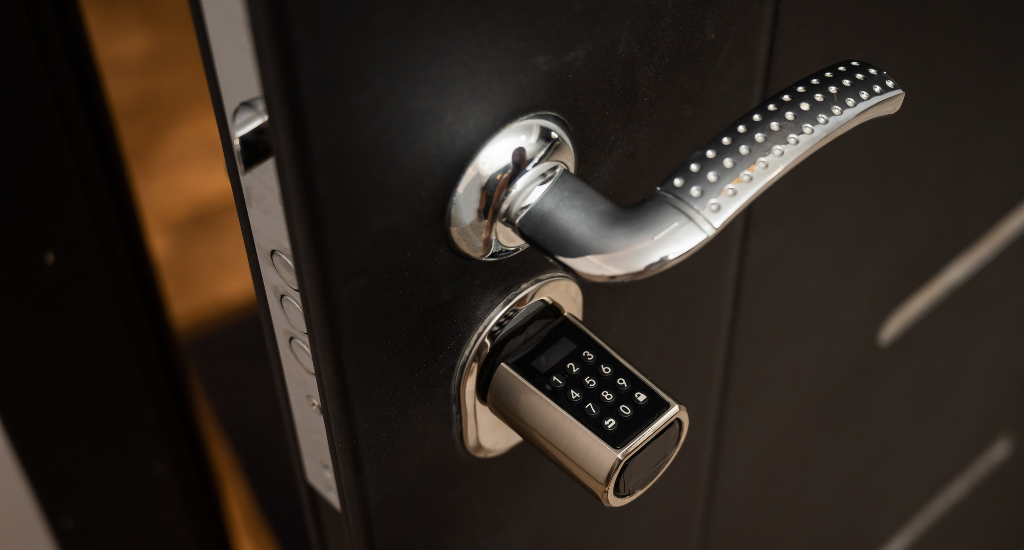In our rapidly evolving digital world, convenience and technological advancements often go hand in hand. One such innovation that has gained immense popularity is the keyless entry system. These systems, commonly found in vehicles, homes, and commercial spaces, allow users to gain access without the need for traditional physical keys. While they offer undeniable convenience, the question that looms is whether keyless entry systems are truly secure.
In this article, we’ll delve into the world of keyless entry systems, exploring their advantages, different types, security concerns, and strategies to mitigate risks.
Advantages of Keyless Entry Systems
The allure of keyless entry systems lies in their convenience and ease of use. No more fumbling for keys in the dark or worrying about losing them. With a simple press of a button, a keypad entry, or even just proximity, doors unlock effortlessly.
Moreover, these systems eliminate the hassle of carrying multiple keys, making life simpler for users. As technology advances, these systems can also seamlessly integrate with smart home and Internet of Things (IoT) devices, allowing users to control various aspects of their surroundings with a single tap.
Types of Keyless Entry Systems
| Keypad-based Systems | Keypad-based systems utilize a numerical code for entry. Users input a predetermined sequence of numbers to unlock the door. While these systems offer a convenient alternative to keys, they are not without their challenges. Keypad codes can be guessed, shared, or even observed by prying eyes, potentially compromising security. |
| Proximity-based Systems | Proximity-based systems employ technologies like Radio Frequency Identification (RFID), Near Field Communication (NFC), and Bluetooth to grant access. A fob or a smartphone with the appropriate app can act as a virtual key. While these systems enhance convenience, there is a risk of signal interception or cloning, leading to unauthorized access. |
| Biometric-based Systems | Biometric-based systems, like those utilizing fingerprint, facial recognition, or iris scans, offer an advanced level of security. Biometric data is unique to each individual, making it difficult to replicate. However, concerns over privacy and accuracy persist. Storing biometric data securely and preventing spoofing attempts are critical challenges. |
Security Concerns with Keyless Entry Systems
As technology advances, so do the techniques used by cybercriminals. Keyless entry systems, though convenient, are not immune to vulnerabilities. Communication protocols used in these systems can be intercepted or manipulated, allowing unauthorized access. Hackers can exploit weaknesses in software to gain control over the system or clone signals to impersonate authorized users. Furthermore, the theft of keyless entry devices can compromise security, especially if sensitive data is stored on them.
Mitigating the Risks
The security of keyless entry systems relies on several key factors. Employing robust encryption and authentication methods is paramount. Manufacturers must prioritize regular software updates and security patches to address any discovered vulnerabilities. Implementing two-factor authentication, which requires users to provide a second form of identification, adds an extra layer of security. Physical security measures, such as secure installation and tamper-resistant designs, can also deter potential breaches.
Real-world Examples of Breaches
Several high-profile cases serve as cautionary tales about the vulnerabilities of keyless entry systems. For instance, in 2019, a prominent car manufacturer faced a breach that allowed hackers to remotely control and steal vehicles. This incident not only led to financial losses but also undermined customer trust. Such cases highlight the need for proactive security measures and continuous improvement.
Balancing Convenience and Security
Striking the right balance between convenience and security is a challenge. While users value the ease of keyless entry systems, manufacturers must prioritize the implementation of robust security measures. Educating users about proper security practices is essential. Encouraging them to use complex passwords, regularly update software, and report any suspicious activities can go a long way in enhancing overall security.
Striking the Balance – Navigating the Future of Keyless Entry System Security
In an increasingly interconnected world, keyless entry systems offer undeniable convenience. However, as technology evolves, so do the tactics employed by malicious actors. It is essential for manufacturers, developers, and users to collaborate in enhancing the security of these systems. Striking the right balance between convenience and security requires a multi-pronged approach, involving robust encryption, regular updates, and user education.
As we move forward, the future of keyless entry system security relies on continuous assessment, adaptation, and innovation to stay one step ahead of potential threats. By learning from past breaches and investing in comprehensive security strategies, we can ensure that the convenience of keyless entry systems is enjoyed without compromising on safety.

